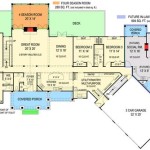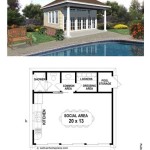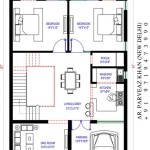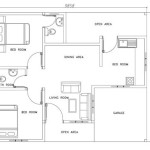Starter Home Plans With Garage: A Comprehensive Guide
The dream of homeownership often begins with the search for a starter home. This initial step into the real estate market represents a significant financial and personal milestone. For many prospective homeowners, a crucial element in their search is the inclusion of a garage. Starter home plans with garages offer a practical solution for vehicle storage, workshop space, and general storage needs, adding considerable value and convenience to the property. This article will delve into the various aspects of starter home plans incorporating garages, outlining key considerations and design options available.
A starter home, by definition, is typically a smaller, more affordable residence intended to be a first step towards acquiring a larger or more permanent home in the future. Choosing a starter home with a garage can be a strategically sound decision. It not only provides immediate functional benefits but also enhances the property's resale value when the time comes to move on. The inclusion of a garage appeals to a broad range of buyers, making it a desirable feature in the market.
Factors to Consider When Selecting a Starter Home Plan with a Garage
Several factors warrant careful consideration when choosing a starter home plan that integrates a garage. These factors encompass budget constraints, space limitations, desired functionality, and long-term needs. A thorough evaluation of these aspects will ensure that the chosen home plan aligns with individual requirements and financial capacity.
Budget: The financial aspect is paramount. Establishing a clear budget is the first step. This involves accounting for the cost of the land, construction materials, labor, permits, and any potential unexpected expenses. Starter homes are designed to be budget-friendly, so it is crucial to prioritize essential features and opt for cost-effective materials without compromising structural integrity or safety. The garage itself can significantly impact the overall cost, depending on its size, construction method, and additional features such as insulation, electrical wiring, and door type. Comparing different garage designs and construction options is essential to find a balance between functionality and affordability.
Space: The available lot size significantly influences the design of the home and the garage. Smaller lots necessitate creative space-saving solutions. Consider the placement of the garage relative to the house. Attached garages are often more space-efficient, allowing for direct access to the house and eliminating the need for a separate driveway. Detached garages, while requiring more land, can offer greater flexibility in terms of design and can be placed strategically to maximize yard space or create a more aesthetically pleasing street presence. Also, consider local zoning regulations regarding setbacks and building height restrictions, as these regulations can impact the size and placement of the garage.
Functionality: The intended use of the garage should guide the design. Will it primarily serve as vehicle storage, or will it also function as a workshop, storage area, or recreational space? This will influence the size, layout, and features of the garage. If the garage will be used for vehicle maintenance or woodworking, consider including ample workspace, proper ventilation, and adequate electrical outlets. If storage is a primary concern, explore options such as overhead storage racks, shelving units, and wall-mounted organizers. Consider the number of vehicles that need to be accommodated, as this will dictate the necessary garage size. Also, factor in the potential for future needs, such as accommodating larger vehicles or storing seasonal equipment.
Long-Term Needs: While a starter home is not intended as a permanent residence, it is important to consider potential future needs. Will the family size increase? Will there be a need for additional storage space? Choosing a home plan that allows for future expansion or modification can be a wise investment. For example, a garage with high ceilings and a reinforced floor can be easily converted into a workshop or recreational area in the future. Similarly, a detached garage can be expanded to accommodate additional vehicles or storage. Consider the potential for adding a second story to the garage to create a guest suite or home office. Thoughtful planning for future needs can increase the long-term value and usability of the home.
Garage Design Options for Starter Homes
The design of the garage is a crucial aspect of the overall home plan. Several garage design options are available, each with its own advantages and disadvantages. The choice of garage design should be based on the factors outlined above, as well as personal preferences and aesthetic considerations.
Attached Garage: An attached garage is directly connected to the house, typically sharing a wall and providing direct access to the interior of the home. This design offers several advantages, including convenience, security, and weather protection. Direct access to the house eliminates the need to venture outside in inclement weather. An attached garage can also serve as a buffer zone, helping to regulate the temperature of the house and reduce energy costs. Structurally, an attached garage can contribute to the overall stability of the home. However, attached garages can also transmit noise and odors into the house, so proper insulation and ventilation are essential. Architecturally, an attached garage can be seamlessly integrated into the design of the house, creating a cohesive and aesthetically pleasing appearance.
Detached Garage: A detached garage is a separate structure located away from the house. This design offers greater flexibility in terms of placement and design. A detached garage can be positioned to maximize yard space or create a more aesthetically pleasing street presence. It also eliminates the risk of noise and odors being transmitted into the house. Detached garages can be designed to complement the architectural style of the house or to stand out as a unique feature. However, detached garages require more land and can be more expensive to build than attached garages. They also require a separate driveway and do not provide the same level of convenience and weather protection as attached garages.
Carport: A carport is a covered structure that provides shelter for vehicles but lacks enclosed walls. Carports are a cost-effective alternative to garages, offering basic protection from the elements. They are relatively easy to construct and require less space than a traditional garage. Carports can be attached to the house or detached as a separate structure. However, carports do not provide the same level of security and weather protection as a garage. They also do not offer storage space or workshop capabilities. Carports are best suited for climates with mild weather and for homeowners who prioritize affordability over security and functionality.
Cost-Saving Strategies for Building a Garage
Building a garage can be a significant expense. However, several cost-saving strategies can help to reduce the overall cost without compromising quality or functionality. Careful planning, material selection, and construction techniques can all contribute to cost savings.
DIY Construction: Performing some of the construction tasks oneself can significantly reduce labor costs. This can include tasks such as framing, insulation, drywall installation, and painting. However, it is important to have the necessary skills and experience to perform these tasks safely and effectively. If lacking experience, consider taking a workshop or consulting with a professional before attempting any DIY construction. Also, be aware of local building codes and regulations and obtain any necessary permits before starting work. Even performing smaller tasks, such as painting and landscaping, can contribute to significant cost savings.
Material Selection: Choosing cost-effective materials can significantly reduce the overall cost of the garage. Opting for less expensive siding options, such as vinyl or wood siding, can save money compared to brick or stone. Similarly, choosing a basic garage door can save money compared to a high-end insulated door. Consider using pre-fabricated trusses for the roof, as they are typically less expensive than traditional stick-built roofs. Explore options for recycled or reclaimed materials, such as lumber or bricks. These materials can often be purchased at a discount and can add character to the garage. Also, consider the long-term cost of materials. While some materials may be less expensive initially, they may require more maintenance or have a shorter lifespan, ultimately costing more in the long run.
Simplifying the Design: Simplifying the design of the garage can also reduce costs. A simple rectangular design is typically less expensive to build than a complex design with multiple angles and features. Reducing the size of the garage can also save money. Consider eliminating unnecessary features, such as windows or decorative trim. A basic, functional garage can provide all the necessary storage and parking space without breaking the bank. Also, consider the roof design. A simple gable roof is typically less expensive to build than a more complex hip roof.
Strategic Purchasing: Purchasing materials during off-season sales or from salvage yards can result in significant savings. Compare prices from different suppliers and negotiate for the best possible deal. Consider purchasing materials in bulk to take advantage of volume discounts. Plan ahead and purchase materials well in advance of the construction start date to avoid price increases and potential shortages. Also, be aware of sales tax and factor it into the overall cost of materials. Consider purchasing used tools and equipment, such as saws, drills, and ladders. These can often be found at a fraction of the cost of new tools.
Enhancing Value with Garage Features
Beyond basic functionality, certain features can significantly enhance the value and utility of a garage. Investing in these features can make the garage more versatile and appealing, both for personal use and for potential future buyers.
Insulation: Insulating the garage is a worthwhile investment, particularly in climates with extreme temperatures. Insulation helps to regulate the temperature inside the garage, making it more comfortable year-round. It also reduces energy costs by preventing heat loss in the winter and heat gain in the summer. Insulation can also help to reduce noise from outside. Consider using fiberglass insulation, spray foam insulation, or rigid foam insulation. The choice of insulation material will depend on the climate, the budget, and the desired level of insulation. Proper ventilation is also important to prevent moisture buildup and mold growth.
Electrical Wiring: Adequate electrical wiring is essential for powering tools, lighting, and other electrical appliances. Install sufficient electrical outlets throughout the garage, including both standard 120-volt outlets and 240-volt outlets for heavy-duty equipment. Consider running electrical wiring for a future electric vehicle charger. Ensure that all electrical wiring is installed in accordance with local building codes and regulations. Hire a qualified electrician to perform the electrical work to ensure safety and compliance. Consider installing a subpanel in the garage to provide dedicated power for the garage and prevent overloads in the main electrical panel.
Storage Solutions: Implementing efficient storage solutions can maximize the usable space in the garage. Install overhead storage racks to store seasonal items and infrequently used equipment. Install shelving units along the walls to store tools, supplies, and other items. Consider using wall-mounted organizers to hang tools and equipment. Utilize the vertical space in the garage by installing tall storage cabinets. Consider building a loft area for additional storage space. A well-organized garage is more functional and appealing.
Garage Door Opener: A garage door opener provides convenience and security. Choose a garage door opener with a reliable motor and safety features, such as obstacle detection and automatic reversal. Consider a garage door opener with smart home integration, allowing you to control the door remotely via your smartphone. Ensure that the garage door opener is properly installed and maintained. Regularly lubricate the moving parts and check the safety features to ensure proper operation. A malfunctioning garage door opener can be a safety hazard.
By carefully considering these factors and design options, prospective homeowners can select a starter home plan with a garage that meets their needs and enhances their property value. This thoughtful approach ensures that the starter home is not only a stepping stone but also a comfortable and functional living space.

Plan 059h 0178 The House
Starter Home Floor Plans For 2024 Builder

Small House Plans Simple Floor Cool

Small House Plans Economical Floor

Plan 64597 Attractive Starter Home With 1 320 Sq Ft

Simple Starter House Plans First Time Buyer Drummondhouseplans

Plan 51848hz 2 Bed Craftsman Starter Home With Garage In Back Modern Farmhouse Plans Country Style House

Two Bedroom Starter Home Plan 52209wm Architectural Designs House Plans

Ultimateplans Com House Plan Home Floor Number 721006
Starter Home Floor Plans For 2024 Builder








